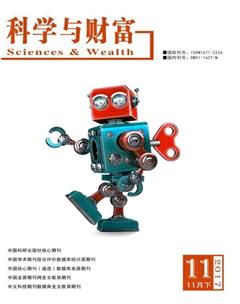Translation Methods of Tour Guide Presentations
Abstract:This thesis makes a wide and detailed investigation on many national famous scenic spots by collecting data, taking pictures, visiting resorts, and transcribing materials, and introduces some methods on tour guide presentation, thus making tour guides served as “envoys of friendship and disseminators of culture”.
Keywords: Tour guide presentation, Translation methods
Chapter One Introduction
The tour guide presentation, also called tour commentary, which is used for introductive purpose, is a tool for exchanging ideas between visitors and the guide. The main characteristic is colloquial, in addition, practical, specific, and functional. A complete commentary generally includes greetings, summary, and some emphases about the scenic spot and the key feature of it is leading tourists to appreciate the beauty of the scenery, spreading our traditional culture, and then cultivating tourists taste.
Chapter Two Translation Methods on Tour Guide Presentations
2.1 Explanation
Take the “Water-sprinkling Festival” of the Dai ethnic group in Yunnan as an example. During the festival, its a local custom for people to sprinkle water on each other as a means of praying for pleasure and peace. If translated simply as “Water-sprinkling Festival”, foreign tourists will only get a rough idea of what happens, without knowing its inner deep intention. An explanation should be added when the term is translated in the text for the first time, such as “a big festival for the Dai people to prey happiness by splashing water onto one another.” In this way they will learn more comprehensively about these special customs.
2.2 Analogy
Example 2. 故宮耗时14年,整个工程与1420结束。
Translation:The construction of the forbidden city took 14 years, and was finished in 1420, 144 years before William Shakespeare was born. (ChengWendong2000:8)
In this material, we add some historical knowledge with which foreigners are familiar, so as to help them know something about the Forbidden City and arouse their interest in visiting China. Visitors from different countries have different thinking patterns. In order to make them comprehend the tour guide presentations, we should adapt different translation strategies.
2.3 Deletion
Example 8. 原文:华清池内有一贵妃池,相传是杨贵妃当年沐浴的地方。唐代诗人自居易的《长恨歌》中有:“春寒赐浴华清池,温泉水滑洗凝脂”的诗句。
Translation:Inside the Huachingchi Spring, there is a bathing pool called Kueifeichi which is said to have been the bathing place of Yang kueifei. The famous poet Baijuyi of the Tang Dynasty wrote ‘‘The Ballad of Endless Woe” which contains the following verses:
“It was in the chilly springtime,
They bathed in Huaching Lake.
And in the tepid waters,
The crusted winter slack.” (Yaobaorong1994:67)
Note: The original text just expresses there is a bathing pool in the Huachingchi which was being used by a famous Chinese beauty. But the text has translated the related poem, which is meaningless to foreign visitors.
2.4 Addition
Additions are used when names of persons or sites of historical incidents, dynasties, literary classics are mentioned in tourist materials. As Chinese readers may know them well, there is no need to explain them in the Chinese materials, yet to foreigner readers it is necessary to add some background information to help them understand the content better. If the guide introduces Qinshihuang to foreigners, he can add some information to Qinshihuang and make the presentation more specific. For example: Qinshihuang, the first emperor in Chinese history who unified China in 221 B.C, and also built the famous palace E huang.
2.5 Simplification
First, lets look at the following example:
“... is made with traditional procedures” used for describing the process of making porcelain, but it is not conform to the oral communication. Instead, adapted it into “… in a traditional way” is more suitable in the tour commentary. With oral communication as its main express method, the ultimate goal of tour commentary is to explain to visitors directly. In order to make visitors understand the Chinese culture easily, so the commentary should as simplified as possible.
Chapter Three Conclusion
The thesis elaborates on the principles and ways of tour guide presentation translation. The translator should have a broad scope of knowledge, a goodknowledge of the differences and similarities between the Chinese and English. The foreign tourism contributes a lot to enriching our own culture, being a better role of culture disseminator and friendship promoter.
References
[1]畢洪英. 敢说 导游服务英语[M]. 北京:机械工业出版社,2004.
[2]陈刚. 导游业务[M]. 北京:高等教育出版社, 2000.
[3]冯伟. 旅游翻译中的文化思考[J]. 中国翻译,2000(5):3-5.
[4]高黎. 用英语介绍中国[M]. 北京:中国水利水电出版社,2011.
作者简介:黄皓 女(1993—),山西省临汾市,山西财经大学研究生在读,外国语言学及应用语言学,研究方向:英语教学

